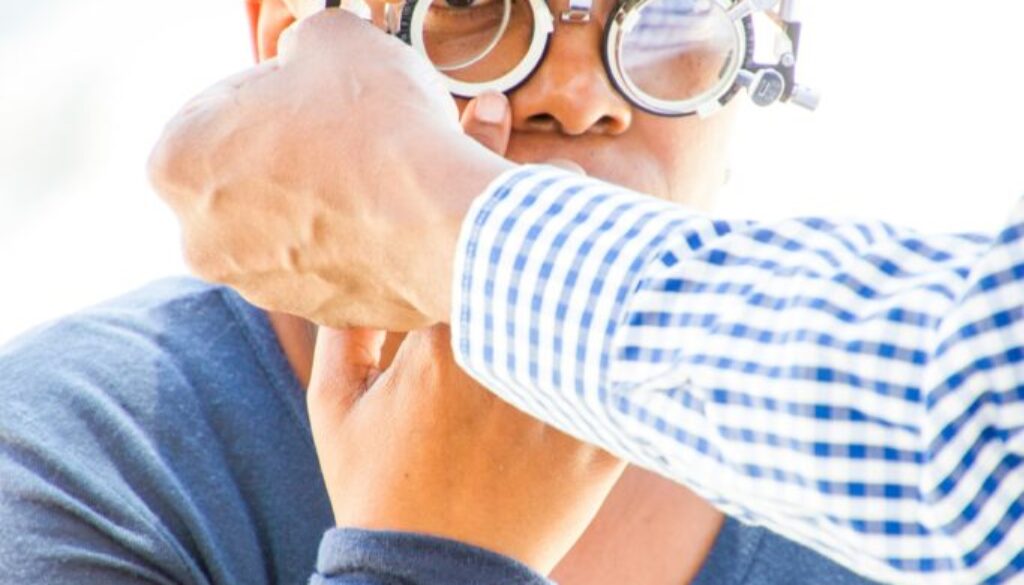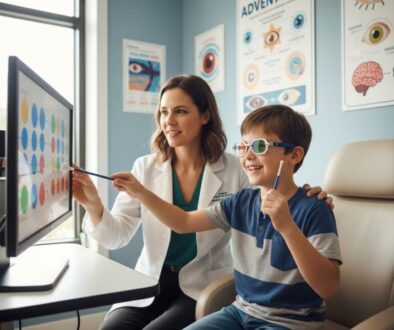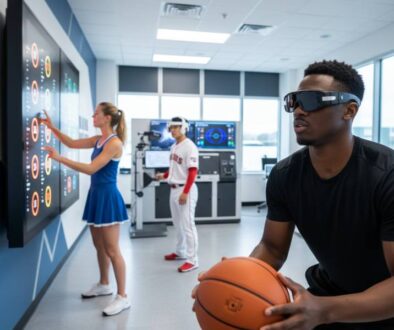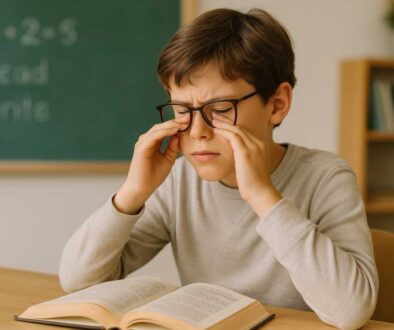Fixing Lazy Eye in Adults: Treatments and Exercises

Fixing Lazy Eye in Adults: Exploring Treatment Options for Amblyopia
Key Takeaways
-
Lazy eye (amblyopia) is treatable in adults, even though it’s more commonly addressed in childhood.
-
Vision therapy is the cornerstone of adult treatment, using structured eye exercises to retrain the brain and strengthen the weaker eye.
-
Eye patching, drops, and special lenses can support therapy by forcing the amblyopic eye to work harder.”
-
Dichoptic training and digital vision programs offer modern, research-backed ways to improve binocular function and reduce suppression.
-
Surgical correction may be considered when amblyopia is linked with eye misalignment (strabismus) and other methods are ineffective.
-
Consistency and commitment are critical to achieving results—progress requires regular practice and follow-through.
-
Scientific evidence confirms adult neuroplasticity, showing that improvements in visual acuity and depth perception are possible at any age.
-
Consulting an eye doctor early ensures a customized treatment plan and better long-term vision outcomes.
Understanding Lazy Eye in Adults
Lazy eye in adults happens when one eye fails to develop normal vision during childhood. The brain favors one eye over the other, leading to poor vision in the weaker eye. This condition is not just a childhood issue; many adults continue to deal with amblyopia throughout their lives. Adults with lazy eye often experience challenges with depth perception, eye coordination, and overall vision.
What Causes a Lazy Eye in Adults?
Amblyopia typically occurs when one eye is weaker due to a lack of use or when the brain favors one eye over the other. This can be due to various factors such as strabismus (crossed eyes), significant differences in vision between the two eyes, or other eye conditions that affect vision in one eye. Over time, the brain starts ignoring signals from the weaker eye, leading to amblyopia.
Treatment Options for Lazy Eye in Adults
There are several treatment options available for correcting a lazy eye in adults. The key to successful treatment is consistency and a commitment to the recommended therapy.
Vision Therapy and Eye Exercises
Vision therapy is a common treatment for lazy eye in adults. It involves a series of eye exercises designed to strengthen the weaker eye and improve eye coordination. These exercises can help improve the visual skills of the lazy eye, encouraging the brain to use both eyes together more effectively.
-
Eye Exercises for Lazy Eye: Exercises that focus on eye teaming, focusing, and tracking can help strengthen the weaker eye. These exercises are often done under the guidance of an eye doctor as part of a structured vision therapy treatment plan.
-
Patching: Covering the stronger eye with an eye patch forces the weaker eye to work harder, which can improve vision in the weaker eye over time. This method is often combined with eye exercises for better results.
Eye Drops and Special Lenses
In some cases, eye drops may be prescribed to blur the vision in the stronger eye, which forces the weaker eye to work harder. This method can be effective for adults who find it challenging to wear an eye patch regularly. Special lenses, including glasses designed to correct the vision difference between the two eyes, may also be part of the treatment.
Surgical Options
For some adults, surgical options may be considered, especially if amblyopia is accompanied by strabismus. Eye muscle surgery can correct the alignment of the eyes, which can improve both the appearance and function of the eyes. Surgery is usually recommended when other treatment methods have not been successful.
Can Adults with Amblyopia Achieve Successful Treatment?
Many adults wonder if it’s too late to correct a lazy eye. The answer is that while treatment is most effective in children, adults with amblyopia can still benefit from treatment. The brain’s plasticity allows for improvements in vision even later in life, although it may require more effort and time.
The Role of Consistency in Treatment
For adults, the success of amblyopia treatment requires motivation and commitment. Regular eye exercises, wearing an eye patch, or following through with other recommended treatments are essential. The more consistent you are with your treatment, the better the outcomes you can achieve.
Types of Vision Therapy Exercises for Lazy Eye in Adults
Vision therapy uses a variety of exercises tailored to stimulate and strengthen the amblyopic eye while improving coordination between both eyes. These exercises can be performed in clinical settings under professional supervision or at home with digital tools.
Common vision therapy exercises include:
-
Eye tracking drills: Training the eyes to follow moving objects smoothly and accurately
-
Focusing exercises: Switching focus between near and far objects to improve flexibility
-
Patching combined with therapy: Temporarily covering the stronger eye to encourage use of the weaker eye during exercises
-
Dichoptic training: Using specialized screens or VR headsets that present different images to each eye, forcing the brain to combine inputs and reduce suppression of the lazy eye
-
Computer-based programs: Interactive software that challenges visual processing through games and tasks designed to improve acuity and binocular function
-
Pencil Push-Ups: Focus on a small object like a pencil as you bring it closer to your nose, helping improve eye coordination.
-
Brock String: A string with beads that you focus on, which helps train the eyes to work together.
These exercises are repeated regularly over weeks or months to promote lasting visual improvements. Compliance and consistency are crucial for success.
Effectiveness of Vision Therapy in Adult Amblyopia: What Research Shows
Contrary to earlier assumptions, a growing body of scientific evidence shows that vision therapy can be effective in treating amblyopia in adults. Studies demonstrate measurable improvements in visual acuity, contrast sensitivity, and binocular vision following vision therapy protocols.
For example, a 2022 study published in Vision Research documented up to 70% improvement in visual performance in young adults undergoing perceptual learning exercises5.
Another clinical trial showed that dichoptic therapy significantly improved both visual acuity and stereopsis in adult patients. The success rate of some vision therapy programs, such as Bynocs, has been reported as high as 90% with good patient compliance.
Experts like Dr. Benjamin Thompson at McGill University emphasize that the adult visual cortex retains plasticity, meaning the brain can relearn to use the amblyopic eye effectively even after the critical childhood period. This paradigm shift opens new treatment possibilities for millions of adults living with untreated lazy eye.
When to Seek Help from an Eye Doctor
If you’re an adult with lazy eye and are interested in treatment, the first step is to consult with an eye doctor. They can evaluate your condition and recommend a treatment plan tailored to your needs. Whether it’s vision therapy, eye exercises, or other treatment options, an eye doctor can guide you on the path to improving your vision.
Empowering Adults to Conquer Lazy Eye
A lazy eye in adults doesn’t have to be a lifelong challenge. With the right treatment plan, including vision therapy, exercises, and possibly surgery, adults can improve their vision and correct amblyopia. At Cook Vision Therapy, we’re committed to helping you achieve the best possible outcomes. If you’re ready to start your journey to better vision, reach out to us today to explore your treatment options.
FAQs
-
What causes lazy eye in adults and can it be treated?
Lazy eye in adults often results from untreated childhood amblyopia or new vision problems. Treatment is possible by correcting vision, patching, or vision therapy to improve the weaker eye
-
How effective is treatment for lazy eye in adults?
-
What are common treatment options for lazy eye in adults?
-
How long does it take to see improvement in lazy eye with treatment?
-
Can wearing an eye patch help fix lazy eye in adults?
-
When should I see a specialist for lazy eye treatment?
-
Is surgery necessary to fix lazy eye in adults?
-
Can adults develop lazy eye later in life?
-
What vision exercises help improve lazy eye in adults?
-
Are there side effects to using eye drops for lazy eye?
-
How do glasses help treat lazy eye in adults?
-
Is lazy eye treatment covered by insurance for adults?



